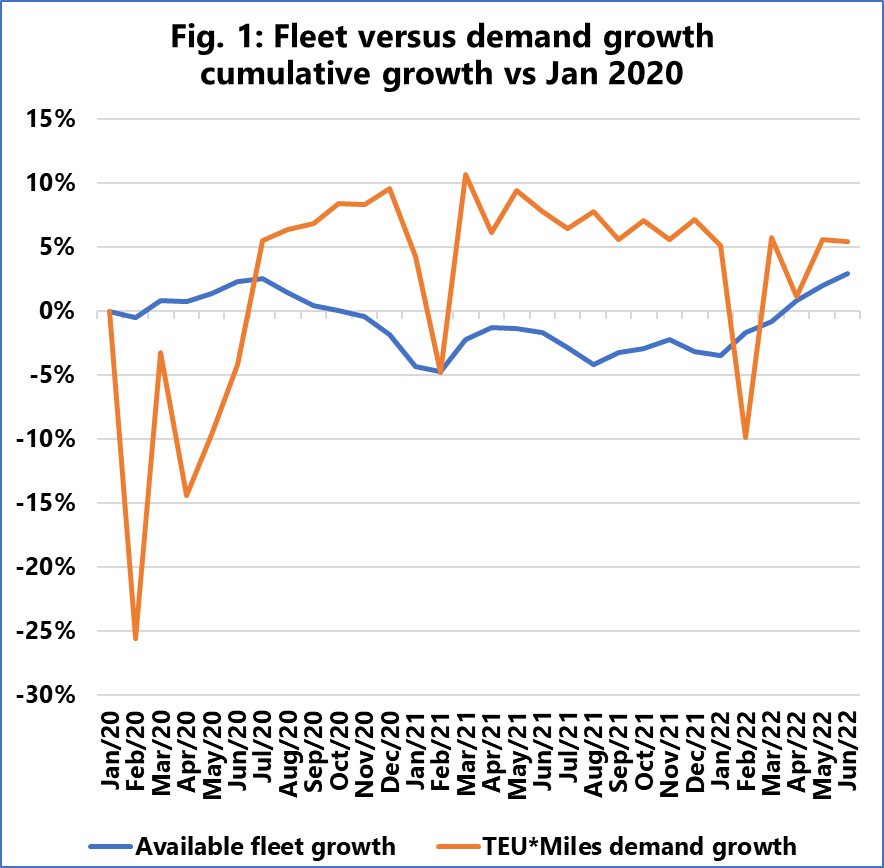
Ms. Lena lee
Leave a message
Ms. Lena lee
Leave a messageMurphy said that while nominal fleet capacity grew steadily at about 4% per year from 2020-2022, actual fleet available capacity declined sharply as delays began to worsen, reaching a low point in February 2021, with a considerable difference between nominal and actual available capacity.
 Photo From :Sea-Intelligence
Photo From :Sea-Intelligence
The chart above shows the growth in available fleet capacity and the growth in demand for TEU*Miles compared to January 2020. The large spike in demand in February 2021 and 2022 is the effect of the Lunar New Year and does not indicate any underlying change.
Murphy said it was clear that the "extreme strength" in favor of shipping companies in 2021 was driven by cumulative demand growth that continued to outpace available fleet capacity. The impact began in July 2020, and the imbalance between supply and demand has only begun to taper off in recent months.
It is understood that a pandeme-driven surge in demand helped ship companies post a staggering $43.9 billion in operating profit in the first quarter of 2022.
In fact, demand consistently exceeded capacity by 10% from November 2020 to January 2022. But the gap has been narrowing and is now down to 2 percent from pre-pandemic levels.
"All in all, the data show that the extreme surge in freight rates in 2021 was indeed driven by a situation where global demand suddenly outstripped fleet capacity, mainly due to unavailability of capacity." "Murphy said.
"The recent normalisation trend has in turn been largely driven by gradual improvements in schedule reliability and ship delays, and as long as that continues, we expect the supply-demand balance to continue to decline as well, putting increasing downward pressure on freight rates."
Source:https://www.sofreight.com/

Privacy statement: Your privacy is very important to Us. Our company promises not to disclose your personal information to any external company with out your explicit permission.

Fill in more information so that we can get in touch with you faster
Privacy statement: Your privacy is very important to Us. Our company promises not to disclose your personal information to any external company with out your explicit permission.